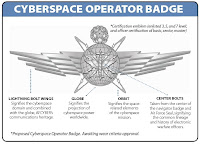Snort Report 17 Posted

My 17th Snort Report titled How to find new features in Snort 2.8.2 has been posted. It was delayed in production for a while but it still applies to Snort 2.8.2.1. From the article: Service provider takeaway: Service providers will learn about new features in Snort 2.8.2 that they can deploy at customer sites. The last time we looked at new Snort options occurred with Snort 2.8.0, released in late September 2007. Since then, Snort 2.8.0.1, 2.8.0.2 and 2.8.1 have been published. At the time of writing, Snort 2.8.2-8-rc1 is the latest version, although release candidate versions should generally not be deployed in production environments. However, RC editions do provide a look at the newest elements of Snort available to the general public. This Snort Report provides an overview of some of the new features in the latest editions of Snort while explaining how to identify these new features. I'm working on a new Snort Report now looking at the new SSP Beta 2.














